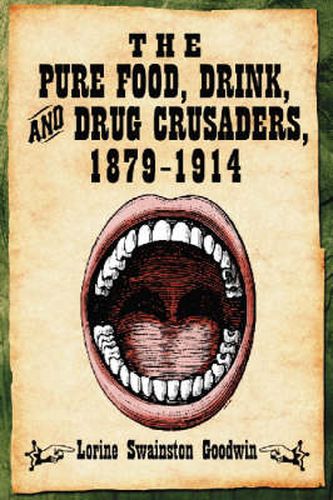Readings Newsletter
Become a Readings Member to make your shopping experience even easier.
Sign in or sign up for free!
You’re not far away from qualifying for FREE standard shipping within Australia
You’ve qualified for FREE standard shipping within Australia
The cart is loading…






This title is printed to order. This book may have been self-published. If so, we cannot guarantee the quality of the content. In the main most books will have gone through the editing process however some may not. We therefore suggest that you be aware of this before ordering this book. If in doubt check either the author or publisher’s details as we are unable to accept any returns unless they are faulty. Please contact us if you have any questions.
Under a likeness of President Theodore Roosevelt in the Library of Congress, a plaque lists the Pure Food and Drink Law of 1906 as one of the three landmark achievements of his administration. Few authorities would disagree. Designed to ensure the safety of foods, drinks and drugs, the law was one of the first pieces of social legislation enacted in the United States. Among the most enthusiastic and persistent crusaders for the bill’s passage were a wide array of women’s groups, many politically active for the first time. Based in large part on primary sources, this work examines the many groups involved in the passage of the Pure Food and Drink Law and how their work affected American society. Part One examines the origins of the movement and why women became so involved. Part Two focuses on the primary groups involved in the law’s passage, such as the National Woman’s Christian Temperance Union and the General Federation of Women’s Clubs. How it was that such diverse groups rallied around this issue is also explored. The industrial and political opposition to the law and how the crusaders overcame it is covered in Part Three, along with details on how the law’s proponents were able to pressure the U.S. Congress into passing it and how they worked to see it fully implemented.
$9.00 standard shipping within Australia
FREE standard shipping within Australia for orders over $100.00
Express & International shipping calculated at checkout
This title is printed to order. This book may have been self-published. If so, we cannot guarantee the quality of the content. In the main most books will have gone through the editing process however some may not. We therefore suggest that you be aware of this before ordering this book. If in doubt check either the author or publisher’s details as we are unable to accept any returns unless they are faulty. Please contact us if you have any questions.
Under a likeness of President Theodore Roosevelt in the Library of Congress, a plaque lists the Pure Food and Drink Law of 1906 as one of the three landmark achievements of his administration. Few authorities would disagree. Designed to ensure the safety of foods, drinks and drugs, the law was one of the first pieces of social legislation enacted in the United States. Among the most enthusiastic and persistent crusaders for the bill’s passage were a wide array of women’s groups, many politically active for the first time. Based in large part on primary sources, this work examines the many groups involved in the passage of the Pure Food and Drink Law and how their work affected American society. Part One examines the origins of the movement and why women became so involved. Part Two focuses on the primary groups involved in the law’s passage, such as the National Woman’s Christian Temperance Union and the General Federation of Women’s Clubs. How it was that such diverse groups rallied around this issue is also explored. The industrial and political opposition to the law and how the crusaders overcame it is covered in Part Three, along with details on how the law’s proponents were able to pressure the U.S. Congress into passing it and how they worked to see it fully implemented.